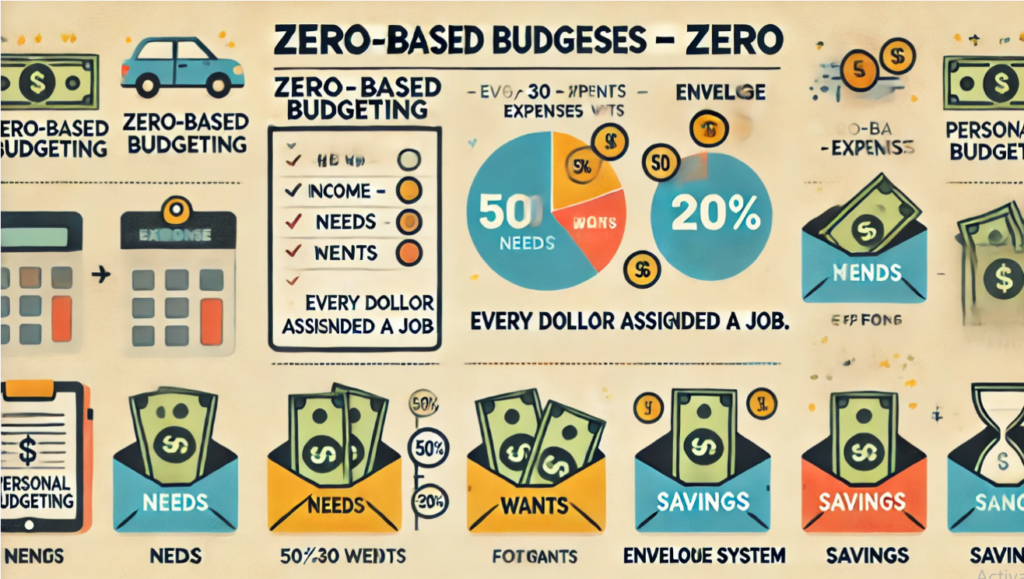
Budgeting for a single income is incredibly important for financial stability and security. When managing finances on a single income, it can be challenging to cover all expenses and save for the future. In this article, our goal is to provide practical, step-by-step strategies for achieving financial stability on a single income. We will address the unique challenges that come with managing finances on a single income and offer actionable tips for creating and sticking to a budget. Whether you are the sole earner in your household or are preparing to transition to a single income, these strategies will help you achieve your financial goals.
Understanding Your Current Financial Situation
Assess Your Income
To calculate your total monthly income after taxes and deductions, start by adding up all sources of income including wages, bonuses, tips, and any other earnings. Then, subtract any taxes, insurance premiums, retirement contributions, and other deductions from your gross income. The resulting number is your net monthly income. It’s important to regularly assess your income to ensure it aligns with your financial goals and needs.
Track Your Expenses
Tracking your expenses is an essential part of managing your finances. It’s important to distinguish between fixed expenses, such as rent, utilities, and insurance, and variable expenses, like groceries and entertainment. By categorizing your expenses, you can gain a better understanding of where your money is going each month. It’s also crucial to track discretionary spending, which includes non-essential purchases like dining out, shopping, and entertainment. These expenses can add up quickly and have a significant impact on your overall financial health. By diligently tracking every expense, you can identify any areas where you may be overspending and make adjustments to your budget as needed. This will ultimately help you stay on track with your financial goals and ensure that you are living within your means.

Analyze Debt and Liabilities
When analyzing debt and liabilities, it’s important to take stock of all your current financial obligations, such as student loans, credit card balances, and mortgage payments. Consider the interest rates on each of these debts and how they impact your overall budget. High interest rates can significantly increase the amount you owe over time, so it’s important to prioritize paying off debts with the highest interest rates first. Additionally, understanding the total amount of debt you have and how it fits into your overall financial picture can help you make informed decisions about managing and reducing your liabilities.
Set Clear Financial Goals
Setting clear financial goals is an important step in managing your money effectively. It’s important to have both short-term and long-term goals in mind. Short-term goals might include building an emergency fund or paying off credit card debt, while long-term goals could be saving for retirement or buying a home. Using the SMART goals framework can help you to set goals that are Specific, Measurable, Achievable, Relevant, and Time-Bound. This can make it easier to track your progress and stay motivated. Prioritizing your goals is also crucial as it will influence how you allocate your budget. By deciding which goals are most important to you, you can ensure that you’re directing your money towards the things that matter most.

Create a Realistic Budget
Choosing the Right Budgeting Method
The 50/30/20 Rule is a straightforward budgeting method that allocates 50% of your income to needs, 30% to wants, and 20% to savings and debt repayment. This can be a good starting point for those new to budgeting. Zero-based budgeting is a method where every dollar is allocated to a specific category, such as bills, groceries, or entertainment. This can help you prioritize your spending and ensure that every dollar has a purpose. The Envelope System is a cash-based budgeting method where you allocate specific amounts of cash to different spending categories and keep them in separate envelopes. This can be helpful for those who struggle with overspending and want a tangible way to manage their finances.

Building a Budget: Step-by-Step
Step 1: When building a budget, the first step is to list all sources of income. This includes your salary, any side hustles, investment income, or any other money that comes in regularly. Step 2: Next, categorize and list all expenses. This includes both fixed expenses, such as rent or mortgage payments, and variable expenses like groceries or entertainment. It’s important to be thorough and include all expenses, big or small. Step 3: After listing all income and expenses, allocate money towards savings and debt repayment. This is an important step in building financial security and reducing debt. Step 4: Finally, adjust as necessary to ensure you’re living within your means.

Adjustments and Flexibility:
Adjustments and flexibility are important aspects of budgeting. It’s essential to be open to making changes to your budget as your financial situation evolves. This could involve adjusting your spending limits, reallocating funds to different categories, or finding ways to save money in certain areas. Being flexible with your budget allows you to adapt to any unexpected expenses or changes in income, ultimately helping you to stay on track with your financial goals. Remember that your budget is a living document that can be adjusted as needed to better reflect your current circumstances.
Cutting Costs and Saving Money
Cutting costs and saving money can be achieved by reviewing and reducing non-essential spending. This includes identifying areas for cutbacks such as dining out, subscriptions, and luxury purchases. Using budgeting apps can help identify trends in overspending and make it easier to track expenses. Saving on household expenses is another way to cut costs. Tips for reducing utility bills, grocery costs, and transportation expenses can include being mindful of energy usage, meal planning, and carpooling. Negotiating with service providers for better rates can also help save money. When it comes to entertainment and leisure, finding free or low-cost activities such as community events and local libraries can be a great way to save money. DIY projects or home entertainment can also help save on outings.

Building an Emergency Fund
It’s important to have an emergency fund to protect yourself from unexpected expenses such as medical bills or car repairs. The recommended amount to save is typically 3-6 months of living expenses. To start saving, consider setting up a dedicated savings account and automating your savings to ensure consistency. Additionally, you can use windfalls such as tax returns or bonuses to boost your emergency fund. Building an emergency fund can provide peace of mind and financial security in the event of unforeseen circumstances.
Paying Off Debt
When it comes to paying off debt, there are a few different strategies to consider. The Snowball Method involves paying off the smallest debt first, which can provide a sense of accomplishment and motivation. The Avalanche Method focuses on paying off high-interest debt first, which can save money in the long run. For single income households, the method that works best will depend on individual circumstances. Some may find the Snowball Method more manageable, while others may benefit more from the cost-saving approach of the Avalanche Method. Negotiating debt terms with creditors can also be a valuable strategy for single income households. This may involve asking for lower interest rates or more flexible payment terms to make debt repayment more manageable. Consolidating debt is another option to consider.

Saving for the Future: Long-Term Financial Planning
When it comes to long-term financial planning, there are several options to consider for saving for the future. One popular option is individual retirement accounts (IRAs) and 401(k)s, which offer tax advantages and long-term growth potential. It’s also important to consider how to contribute to retirement accounts on a single income, as this can require careful budgeting and prioritizing savings. For those new to investing, it’s helpful to understand the basics of low-cost index funds, exchange-traded funds (ETFs), and other investment options. Dollar-cost averaging, which involves regularly investing a fixed amount over time, can help reduce the impact of market volatility and is important to start early to maximize long-term growth potential.
Managing Financial Stress
Managing financial stress can be a challenging task, but there are several strategies that can help address the psychological impact of single income living. It’s important to acknowledge and address feelings of financial pressure and stress, as they can have a significant impact on mental health. Building financial confidence can be achieved through celebrating small wins and progress toward financial goals. Seeking professional financial advice when needed can also provide valuable guidance and support. In addition, finding support from friends, family, and online communities can be beneficial in navigating financial stress. It’s important to have a strong support network to lean on during difficult times. Additionally, there are many financial literacy resources available to improve financial knowledge and empower individuals to make informed financial decisions.

Tips for Maintaining Financial Stability in the Long Run
Investing for the Future The benefit of investing in long-term financial stability through retirement accounts, stocks, or real estate. Avoiding High-Interest Debt The impact of high-interest debt on long-term financial stability and the importance of managing debt responsibly. Building an Emergency Fund The necessity of having a financial safety net for unexpected expenses, such as car repairs or medical bills. Seeking Professional Advice The value of consulting a financial advisor for personalized guidance and strategies for long-term financial stability. Prioritizing Saving The importance of consistently saving a portion of income for future goals, such as buying a home or starting a business.

Conclusion
The key strategies covered in the article include creating a budget, living within your means, building an emergency fund, and investing in retirement accounts. It is important to start building financial stability on a single income today by implementing these strategies. Take one step at a time, be patient, and celebrate financial victories along the way. Building financial stability on a single income is achievable with dedication and strategic planning.














